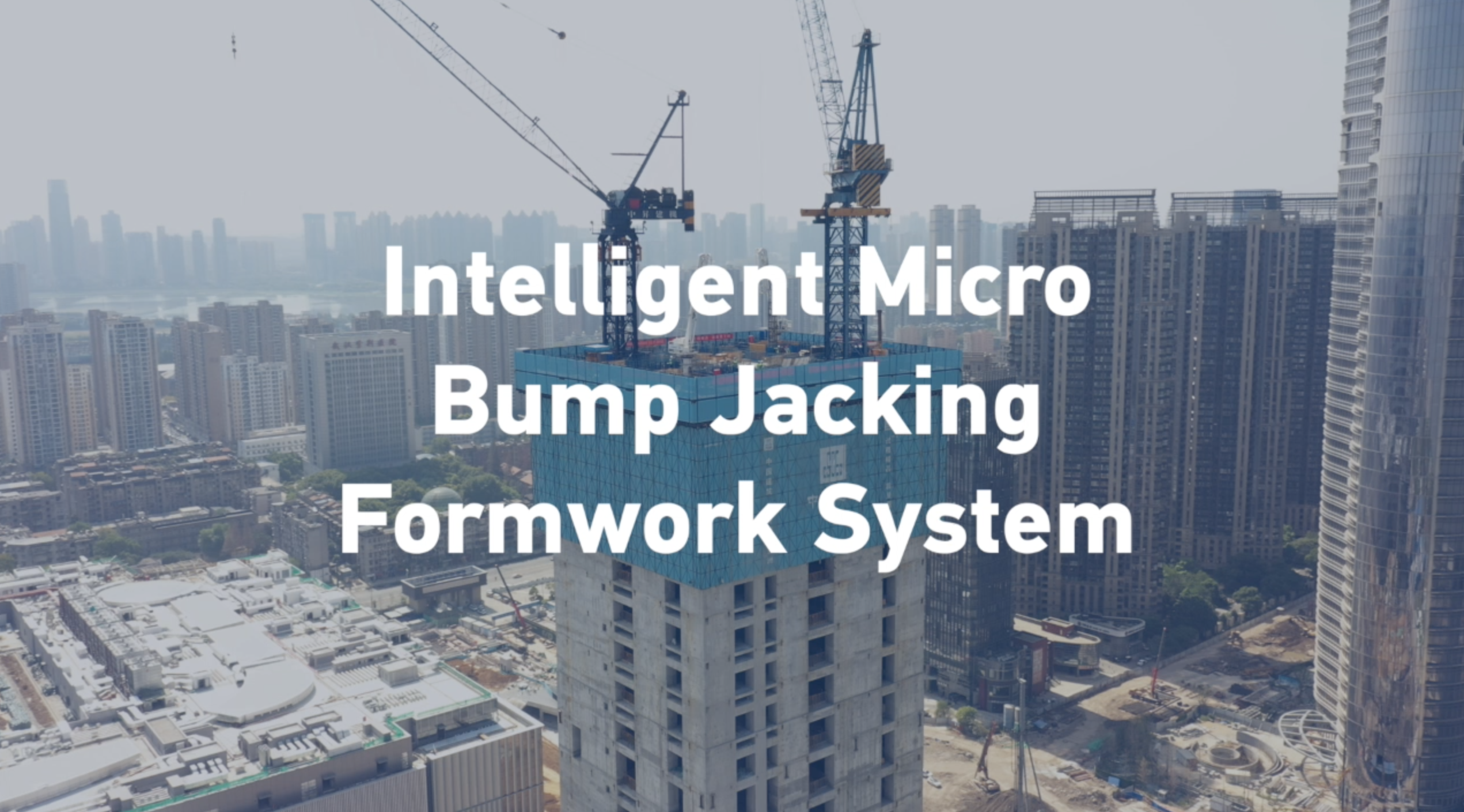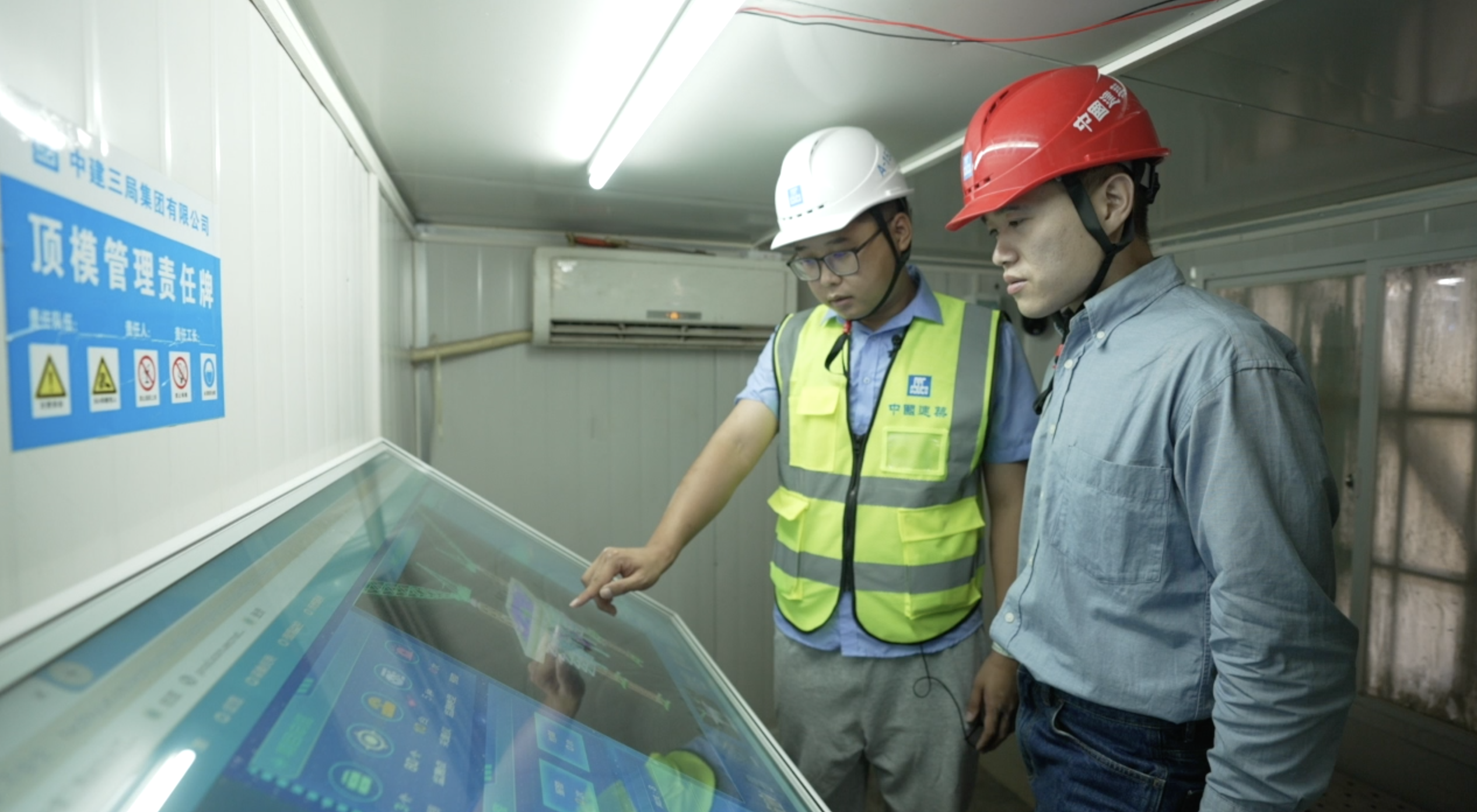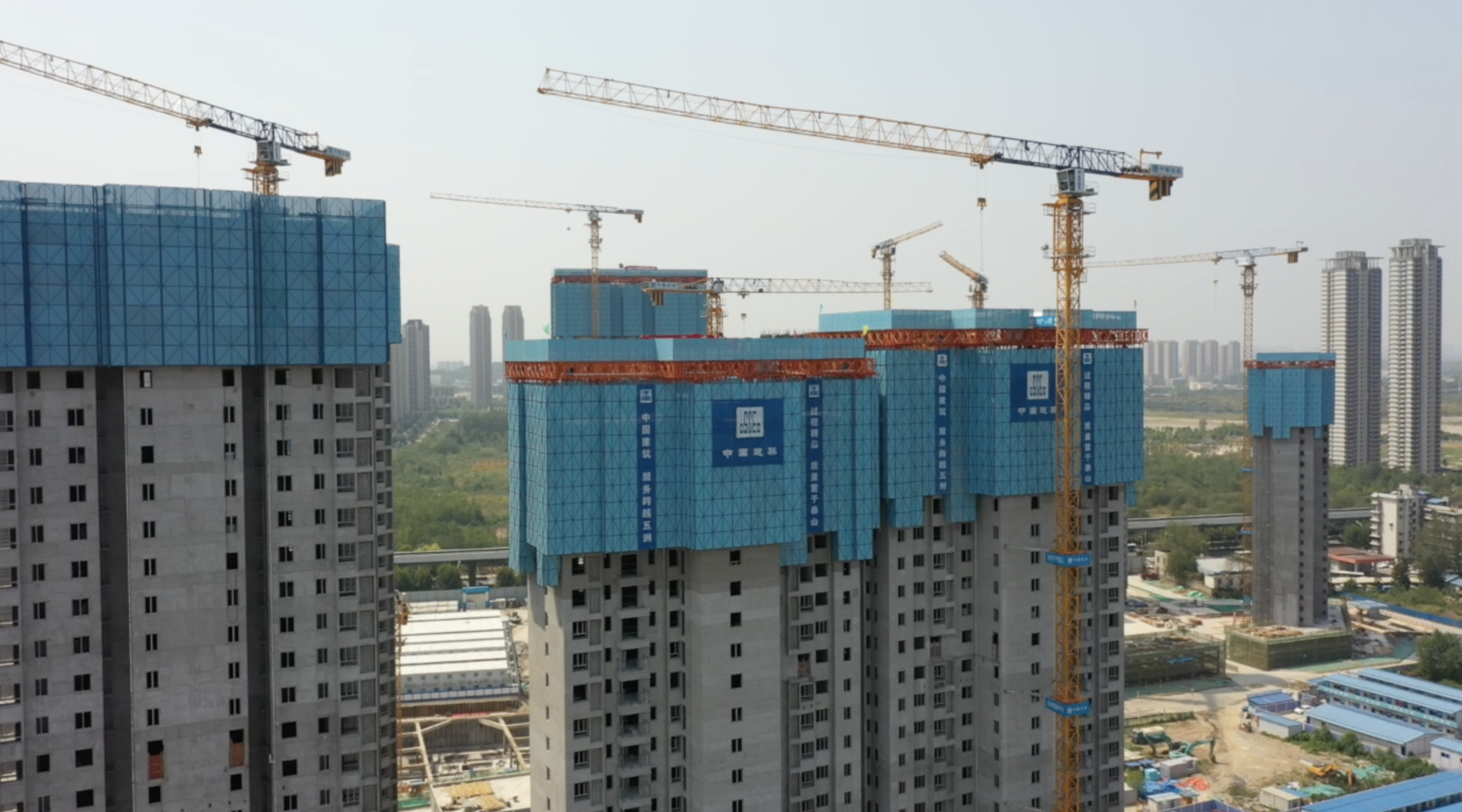05:05

China is home to half of the world's skyscrapers. And 70 percent of the skyscrapers measuring over 300 meters high around the world were built by Chinese companies.
The threshold for modern skyscrapers is 300 meters. Construction will be much more challenging above that height – mostly due to stronger winds. And China has been a leader in construction technologies for building skyscrapers.
I visited a building that's proof of China's mastery in skyscraper engineering. It is a construction beast that holds a record of building one floor in only three days.
The official name of the machine is pretty long and has given me a learning curve – the Intelligent Micro Bump Jacking Formwork System, an integrated building factory in the sky.

The building machine is an integrated building factory in the sky. /CGTN
The building machine is an integrated building factory in the sky. /CGTN
The machine covers three and half structural floors. The top level is for binding steel bars and creating the skeleton of a building. And the other levels are for moulding, concreting and structural reinforcement. That means multiple floors can be built at the same time – improving efficiency while reducing labor costs by 20 percent.
"Work safety at heights is the most important factor, because strong winds and torrential rains affect it. Conventional racks are unstable at heights of 300 to 500 meters. For our integrated building machine, the most important thing is to provide a safe and stable platform. It offers workers a safe working environment," said Bao Zeding, an engineer from the General Construction Company of the China Construction Third Engineering Bureau (CCTEB) Co., Ltd.
Bao is part of the team building the Great River Center in central China's Wuhan along the Yangtze River bank – a new cluster of modern high-rises.
It took two years to complete one third of the main tower of almost 400 meters with the help of the building machine, which weighs almost 1,000 tonnes.
"There are 12 columns, which are shown in pink. A hydraulic cylinder system is installed in the columns for jacking. When we start jacking, the hydraulic cylinder system of these 12 columns pushes the platform to a new height," explained Qi Te, another engineer working on the Great River Project, who took me to the control room.

The machine's control room. /CGTN
The machine's control room. /CGTN
Basically, hydraulic systems lift the entire platform up while it builds up the tower. The one I saw is a fourth-generation machine. It takes the platform four hours to jack up, which is half the time needed for previous generations.
"In terms of the construction equipment and technology, we are in a leading position in the world," said Wang Kaiqiang, executive director for the China Construction Institute of Advanced Technology.
"The building machine itself is just a piece of equipment. It is also necessary to consider whether it can be efficient and use fewer resources. We need to improve the industrialization of the building machine," he added.
Wang chairs the research center that has been perfecting the building machines.
Changes in policies and market
I've learned that previous generations of building machines were much heavier, weighing a couple of thousand tonnes, and they could build super tall buildings quite easily.
The market has changed, however, after China took a different turn in rising skylines. The country rolled out regulations to ban construction of skyscrapers exceeding 500 meters in height and limit construction of buildings exceeding 250 meters.
It's an effort to curb regional competitions for creating new landmarks as vanity projects – some of which are not needed.
So now, the building machines have become smaller, smarter, and can fit into different heights and sizes.
I also went on top of a much smaller building machine, used for residential buildings.

Small building machines for residential buildings. /CGTN
Small building machines for residential buildings. /CGTN
"We used to have one comprehensive quality control at the final stage before the concrete placement. Now, the inspection process for the reinforcement, formwork, concrete and embedded parts are all done separately," said Pan Han, vice general manager of the Technology Innovation Development Company of the CCTEB.
As each level of the building machine is dedicated to one single task, workers can focus more on their specialized skill sets. And each procedure will be inspected separately, ensuring quality.
Skyscrapers have been a symbol of fast economic growth. But as China has shifted from quantity-driven to quality-driven development, it's no longer just focusing on height and speed, but rather on sustainability and what its people need.